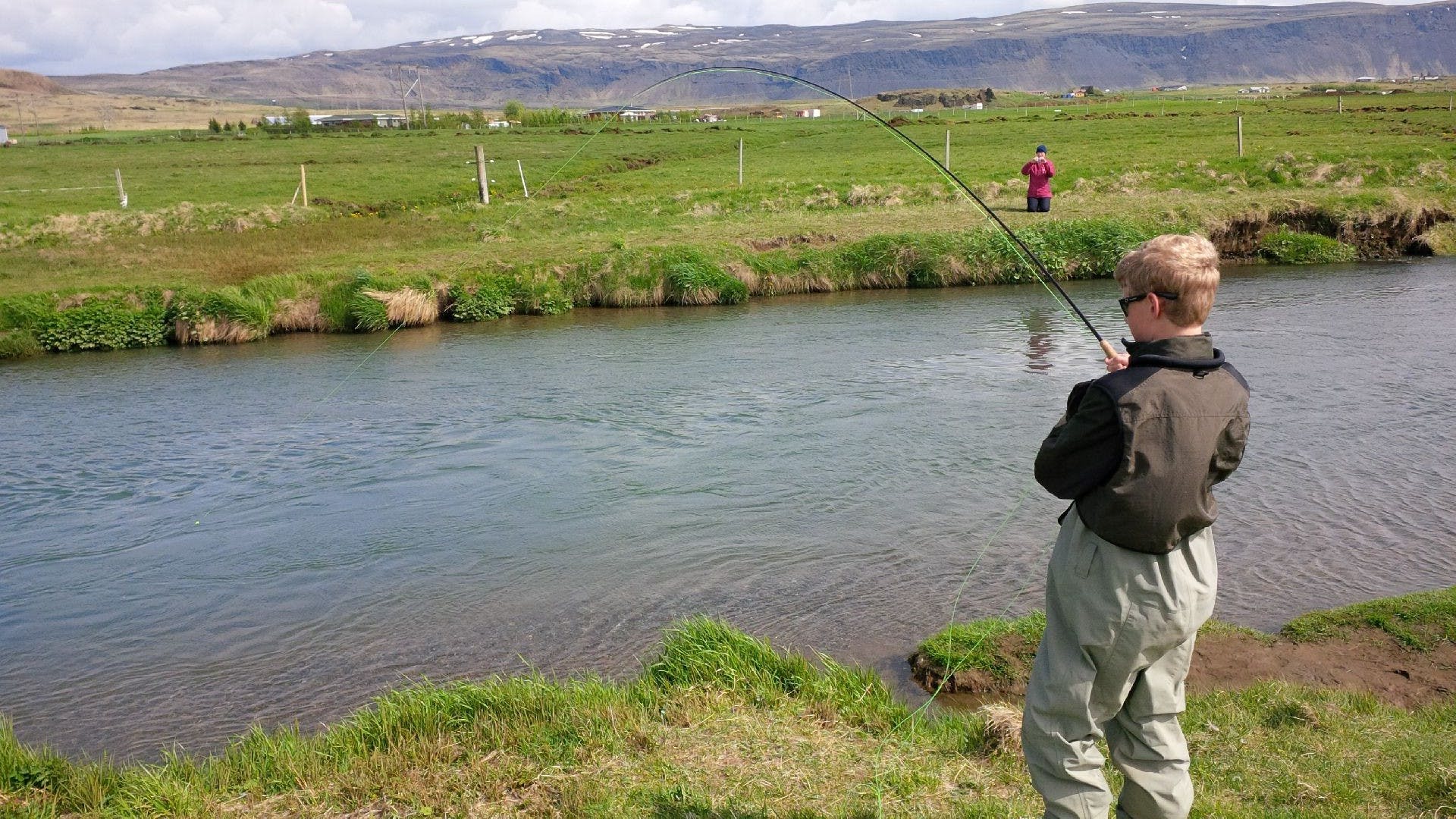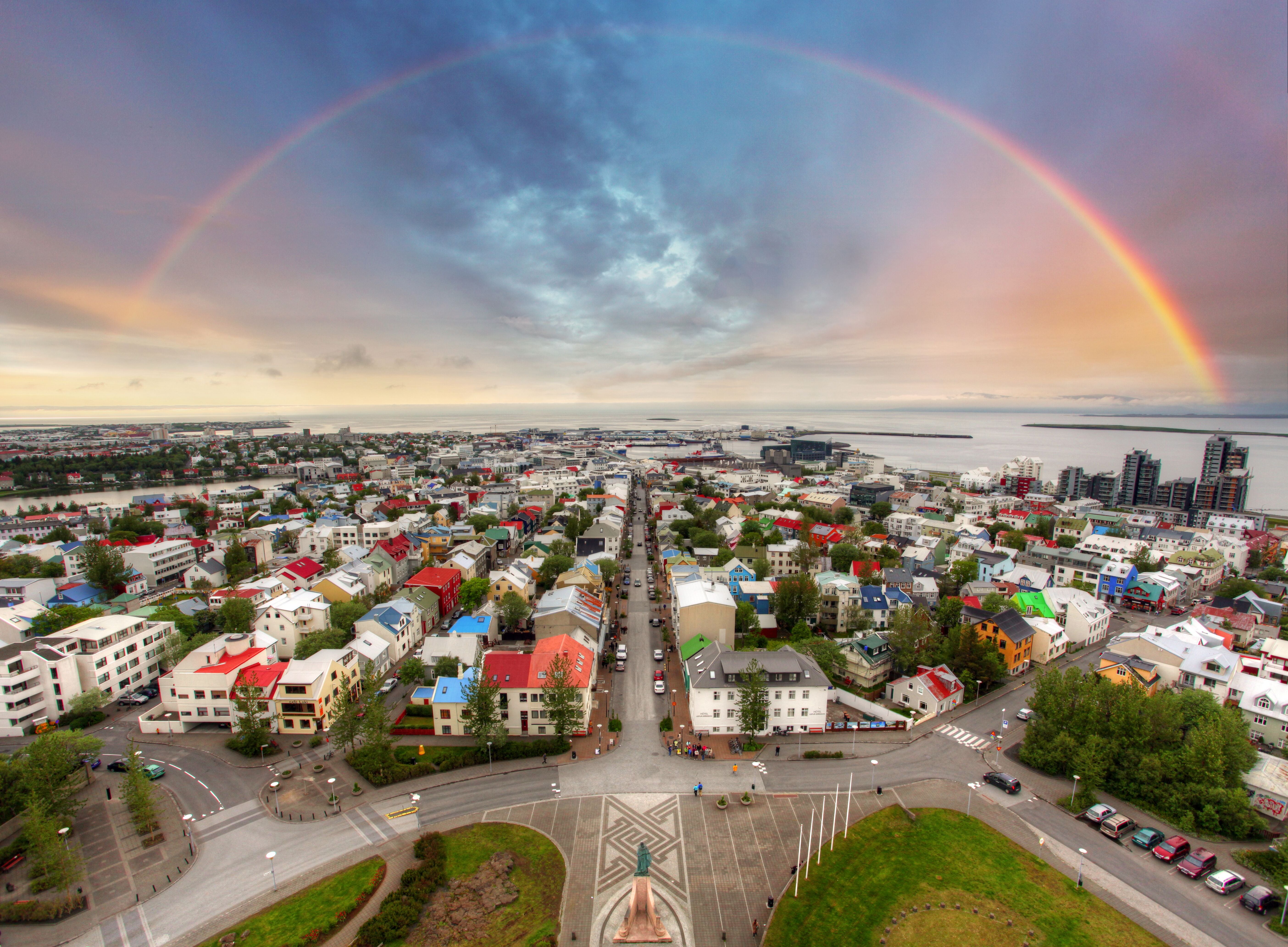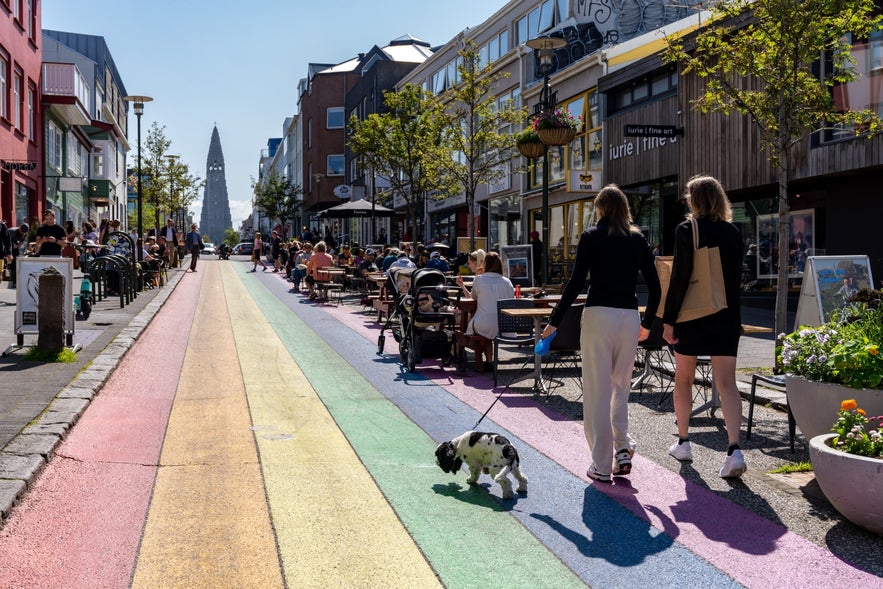
Discover the worst tourist traps in Iceland to plan smarter and save money on your trip. Although Iceland is one of the friendliest and safest countries in the world, a few common pitfalls can still raise your costs.
With its breathtaking scenery and fascinating geology, it’s no surprise that more and more travelers book trips to Iceland each year. Yet as tourism grows, so do the tourist traps that can sometimes catch visitors unaware
Why You Can Trust Our Content
Guide to Iceland is the most trusted travel platform in Iceland, helping millions of visitors each year. All our content is written and reviewed by local experts who are deeply familiar with Iceland. You can count on us for accurate, up-to-date, and trustworthy travel advice.
Whether it’s finding a cheap rental car or a great deal on accommodation in Reykjavik, keeping an eye on costs can make a big difference. Careful planning helps you save money in Iceland and get more out of your vacation.
There are simple ways to save costs on your trip, such as making the most of the VIP Club of Guide to Iceland. It gives you special offers and discounts at various shops, restaurants, and bars around Iceland, helping you stick to your budget.
From high prices to crowded attractions, exploring Iceland’s tourism scene takes some care and smart planning.
In this article, we’ll look at the worst tourist traps in Iceland and how to avoid them. These include scams aimed at unsuspecting travelers and common mistakes visitors often make in this beautiful country
- Read about the Top 11 Iceland Travel Tips
Mistakes to Avoid in Iceland at a Glance
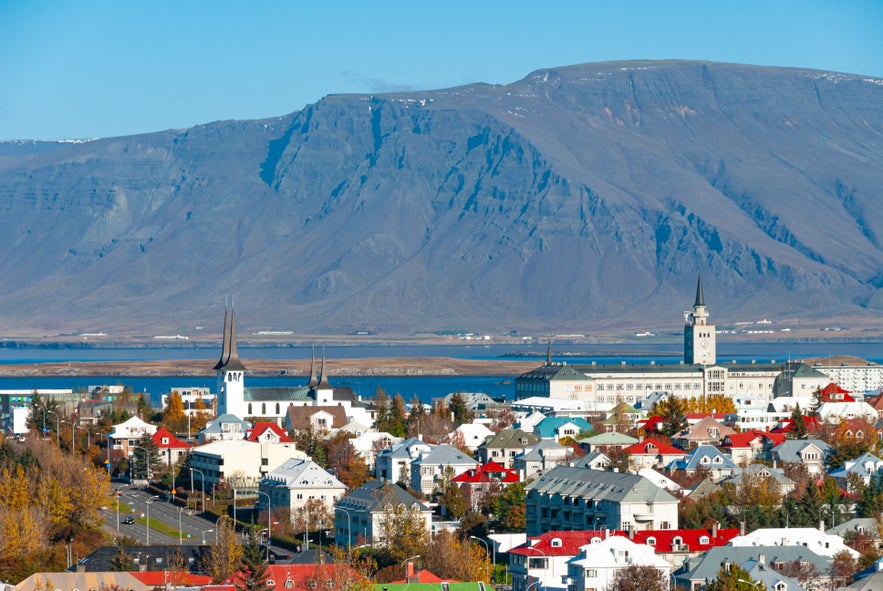
Before learning about Iceland’s most common tourist traps, consider these quick reminders. They’ll help you travel smarter, spend less, and enjoy the country like a local.
-
Manage your expectations – Not every volcano tour includes lava, and not every landmark will take your breath away. Iceland’s beauty often lies in its subtleties and contrasts, so keep an open mind.
-
Pack smart – The weather changes without warning, so layering is essential. Bring a waterproof jacket, warm base layers, and sturdy shoes, no matter the season.
-
Travel with intention – Iceland is vast and full of wonders, but trying to see everything will only wear you out. Focus on a few regions and savor each experience.
-
Shop wisely – From fake wool sweaters to snacks and souvenirs, not everything is worth the price tag. Do a little research to spot the authentic and skip the overpriced.
-
Plan ahead – Airport transfers, alcohol purchases, and geothermal spa visits often cost more if booked last-minute. A bit of preparation can save you money and time.
-
Stay practical – Bring a towel for hot springs, refill a reusable water bottle instead of buying bottled water, and embrace Iceland’s slower rhythm to get the most from your trip.
14 Tourist Traps and Common Travel Mistakes to Avoid in Iceland
 Travelers in Iceland often spend more than they expect on souvenirs, convenience store snacks, or tightly packed schedules. Small mistakes like these, along with intentional tourist traps, can add stress and extra costs to your trip.
Travelers in Iceland often spend more than they expect on souvenirs, convenience store snacks, or tightly packed schedules. Small mistakes like these, along with intentional tourist traps, can add stress and extra costs to your trip.
Below is a list of the worst tourist traps in Iceland. Knowing about them in advance will help you save money, travel smarter, and enjoy your visit with fewer surprises.
14. Expecting Eruptions on Volcano Tours
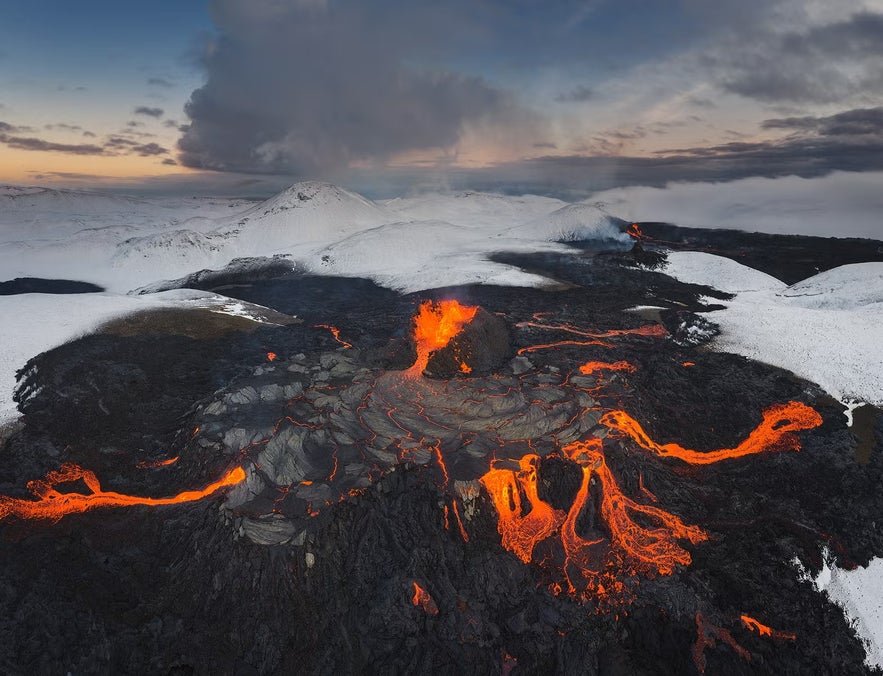 Iceland is called the “land of ice and fire” for a good reason. The country sits between the North American and Eurasian tectonic plates, which causes a lot of volcanic activity.
Iceland is called the “land of ice and fire” for a good reason. The country sits between the North American and Eurasian tectonic plates, which causes a lot of volcanic activity.
While many tours showcase lava fields, craters, and dramatic volcanic landscapes, don’t expect to see glowing lava. Eruptions are unpredictable and often occur far from safe viewing areas.
However, in recent years, visitors have witnessed real lava flows during the Reykjanes Peninsula eruptions starting in 2021. These rare, once-in-a-lifetime events revealed Iceland’s incredible volcanic power. Learn more in this complete timeline of the Reykjanes eruptions.
If you want to see molten rock up close, the Lava Show in Reykjavik offers a safe and fascinating experience. Even without live eruptions, Iceland’s volcanic tours remain captivating, shaped by the remnants of ancient activity.
This is what you can expect from top-rated volcano tours in Iceland, featuring experiences that reveal the country’s fiery origins and stunning geological formations:
-
Inside the Volcano Thrihnukagigur Tour with Transfer from Reykjavik – Descend into the colorful magma chamber of the dormant Thrihnukagigur Volcano for an unforgettable adventure inside the Earth.
-
Raufarholshellir Lava Cave Tour – Walk through one of Iceland’s longest lava tunnels and admire the striking formations left by ancient lava flows.
-
Active Volcano and Reykjanes Sightseeing Tour – Explore Iceland’s newest lava field on the Reykjanes Peninsula. During rare active eruptions, you might glimpse real flowing lava, along with dramatic craters and volcanic terrain.
13. Overhyping the Sun Voyager
 The Sun Voyager is one of Reykjavik’s most recognizable landmarks. Designed by Jón Gunnar Árnason, the stainless-steel sculpture was created in 1986 to celebrate the city’s 200th anniversary. It represents a dreamlike Viking ship and symbolizes hope and discovery.
The Sun Voyager is one of Reykjavik’s most recognizable landmarks. Designed by Jón Gunnar Árnason, the stainless-steel sculpture was created in 1986 to celebrate the city’s 200th anniversary. It represents a dreamlike Viking ship and symbolizes hope and discovery.
Some travelers list it among the worst tourist traps in Iceland, but that’s not entirely fair. The sculpture itself is beautiful, but it’s smaller than many expect, so it’s best appreciated as part of a short stop rather than a major attraction.
You’ll often find the Sun Voyager featured as a highlight on walking tours in Reykjavik, where you can enjoy the waterfront views and learn more about its meaning. It’s a lovely spot for photos, especially at sunset, and well worth visiting as part of your city exploration.
12. Believing You Can See Everything
 Many first-time travelers think they can see all of Iceland in one trip. Though the country looks small, its sights are far apart, with countless waterfalls, glaciers, and volcanoes, making it impossible to see everything at once.
Many first-time travelers think they can see all of Iceland in one trip. Though the country looks small, its sights are far apart, with countless waterfalls, glaciers, and volcanoes, making it impossible to see everything at once.
Trying to fit too much into your itinerary can leave you tired and rushed, with little time to enjoy each stop. It’s better to slow down and take in the sights at your own pace.
Plan your route carefully and focus on one or two regions. Travelers on a short stay often choose the Golden Circle or South Coast tours, while those with more time can explore the Ring Road or the Westfjords.
11. The South Coast Plane Wreck
 In 1973, a Super DC-3 aircraft flown by the US Navy crash-landed on Iceland’s South Coast. The crew survived, and the wreck later became a popular, though debated, tourist attraction. In June 2025, the original plane was removed due to damage and replaced with another DC-3 in better condition.
In 1973, a Super DC-3 aircraft flown by the US Navy crash-landed on Iceland’s South Coast. The crew survived, and the wreck later became a popular, though debated, tourist attraction. In June 2025, the original plane was removed due to damage and replaced with another DC-3 in better condition.
The site is often listed among the worst tourist traps in Iceland, not because it isn’t interesting, but because many visitors are surprised by how remote it is. The wreck sits on the black sand plains of Solheimasandur, about an hour’s walk each way from the main road, with little to see along the route.
If you’d still like to visit, you can take the shuttle to save time or join an ATV tour on the South Coast that includes the wreck and nearby black sand beaches. This adds a bit of adventure and makes the journey more enjoyable.
10. Fake Icelandic Sweaters
 The Lopapeysa, or Icelandic wool sweater, is one of the best souvenirs to get in Iceland. It’s made from warm, water-resistant wool and has a round pattern around the neck that shows traditional Icelandic style.
The Lopapeysa, or Icelandic wool sweater, is one of the best souvenirs to get in Iceland. It’s made from warm, water-resistant wool and has a round pattern around the neck that shows traditional Icelandic style.
The Lopapeysa is an important part of Icelandic culture and loved by locals and visitors alike. However, many sweaters sold in shops are fake, made overseas from cheap materials. These imitations are often overpriced, making them one of the worst tourist traps in Iceland.
- See also: What to Do and Where to Go in Iceland
To make sure you’re buying a genuine Icelandic sweater, check the label for “Made in Iceland” and look for products from the Icelandic Handknitting Association. Authentic Lopapeysa sweaters are hand-knitted from Icelandic wool and seamless, while fake ones often have stitched sides and machine-made patterns.
For more tips on Icelandic shopping and local culture, read our ultimate guide to traditional Icelandic sweaters and wool. It shows you where to buy authentic Icelandic sweaters that truly support Icelandic craftsmanship.
9. Bottled Water
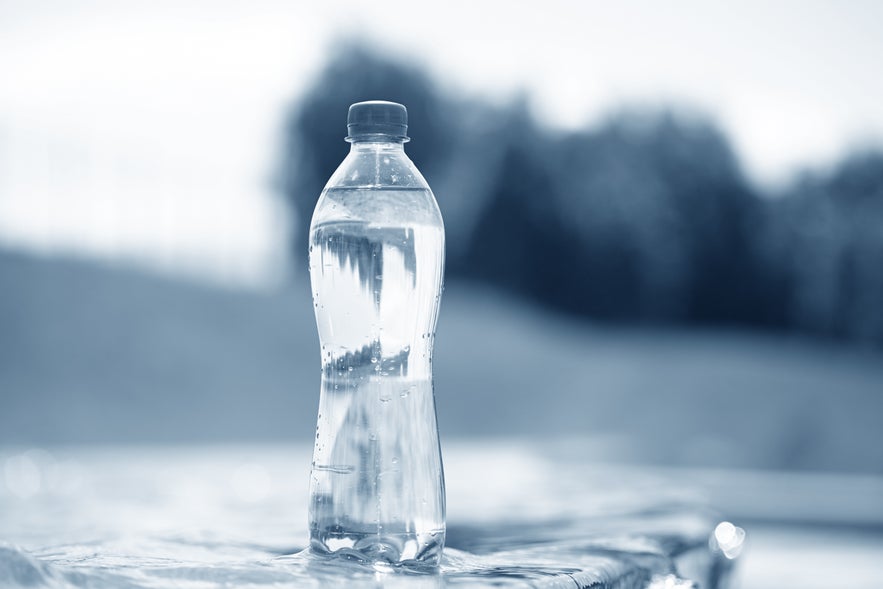 The best drink in Iceland is free. It’s clean, refreshing tap water that comes from pure glacier melt naturally filtered through volcanic rock. You can safely drink it anywhere in the country and even ask for a complimentary glass at restaurants or cafes.
The best drink in Iceland is free. It’s clean, refreshing tap water that comes from pure glacier melt naturally filtered through volcanic rock. You can safely drink it anywhere in the country and even ask for a complimentary glass at restaurants or cafes.
Still, overpriced bottled water is sold almost everywhere, making it one of the worst tourist traps in Iceland. There’s no need to spend extra money on something that’s already available for free. Instead, bring a reusable water bottle and refill it as you travel.
In one well-known case, a hotel owner in Reykjavik told guests not to drink tap water and urged them to buy bottled water from the hotel instead. According to Iceland Monitor, an investigation later revealed that both the tap and bottled water came from the same source.
For first-time travelers, this is a good reminder that tap water in Iceland is always safe to drink, even in remote areas. You can enjoy pure, cold Icelandic water straight from the faucet, no filter needed.
8. Forgetting Your Towel Before Bathing
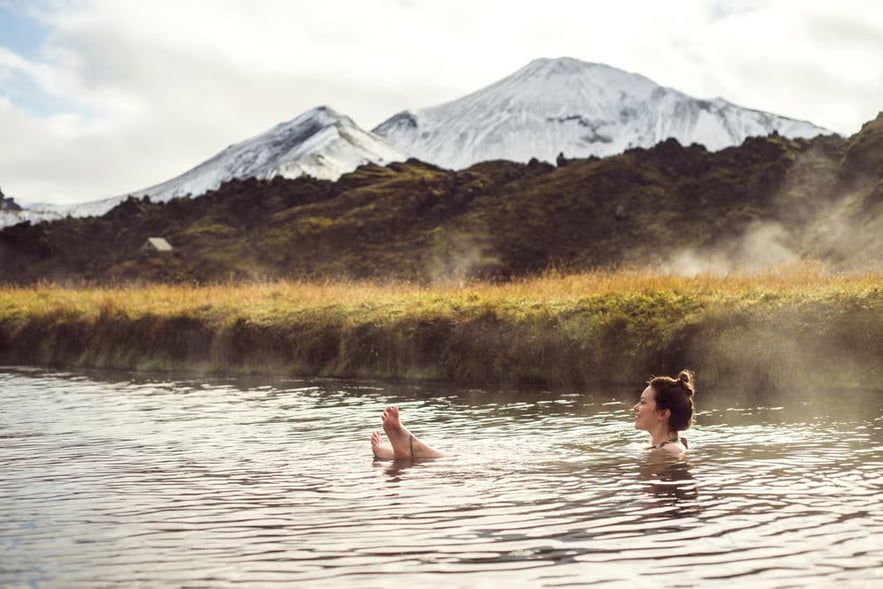 Bathing is a big part of Icelandic culture. With natural geothermal energy, hot pools and springs are found all over the country. Locals and travelers love soaking in warm water surrounded by nature, as it’s one of the most authentic Icelandic experiences.
Bathing is a big part of Icelandic culture. With natural geothermal energy, hot pools and springs are found all over the country. Locals and travelers love soaking in warm water surrounded by nature, as it’s one of the most authentic Icelandic experiences.
However, forgetting to bring your own towel can turn into one of the worst tourist traps in Iceland. While famous spas like the Blue Lagoon and Sky Lagoon include a towel in the price, many other swimming pools and geothermal baths charge extra.
If you’re visiting natural hot springs such as Reykjadalur or Landmannalaugar, remember that there are no facilities like changing rooms, showers, or towel service. You’ll need to bring your own and pack a bag to keep your clothes safe and dry.
Bringing a towel may seem like a small thing, but it saves money and avoids stress. A lightweight, quick-drying microfiber towel is perfect for travelers and useful at hot springs, public pools, or as a backup at your accommodation.
7. Forgetting Your Jacket
 The weather in Iceland changes quickly. It might be sunny and calm in the morning, then windy or raining by the afternoon. Because of this, it’s always smart to bring a jacket with you, even if it seems warm when you leave your hotel.
The weather in Iceland changes quickly. It might be sunny and calm in the morning, then windy or raining by the afternoon. Because of this, it’s always smart to bring a jacket with you, even if it seems warm when you leave your hotel.
Many first-time travelers underestimate how unpredictable Iceland’s weather can be. Even in summer, temperatures can drop suddenly, especially near waterfalls, glaciers, or on boat tours. A waterproof and windproof jacket will keep you dry and comfortable throughout the day.
If you’re visiting in winter, make sure your coat is insulated and warm enough for snow and icy winds. Layers are key, so wear a thermal base layer, a sweater or fleece, and a good outer shell. You can find great options at outdoor stores in Reykjavik or rent winter gear.
Staying prepared for Iceland’s ever-changing weather not only keeps you safe but also helps you enjoy your adventures without worry.
6. The Airport Currency Exchange
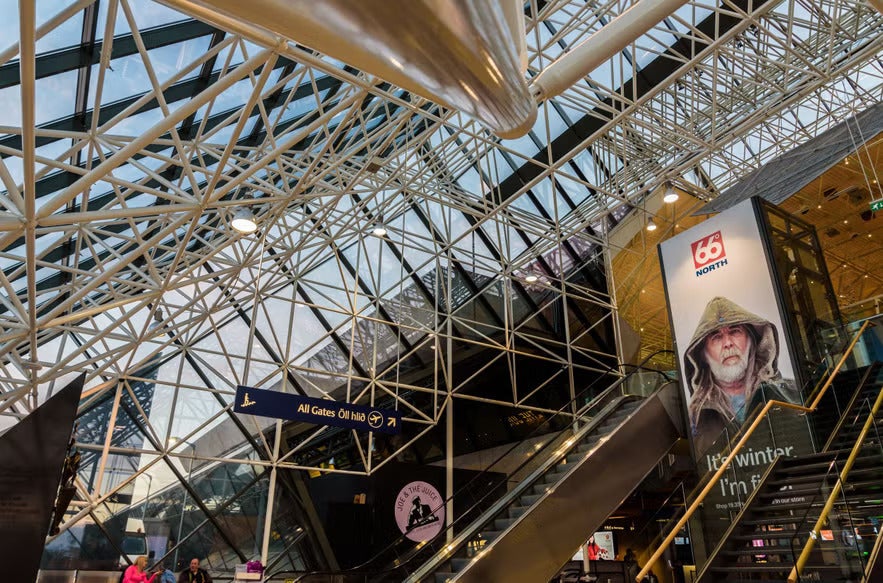 Iceland uses its own currency, the Icelandic krona (ISK), not the Euro. While most shops, restaurants, and tours in Iceland accept credit cards and contactless payments, some travelers still like to carry a small amount of cash for emergencies or small purchases.
Iceland uses its own currency, the Icelandic krona (ISK), not the Euro. While most shops, restaurants, and tours in Iceland accept credit cards and contactless payments, some travelers still like to carry a small amount of cash for emergencies or small purchases.
You can exchange money at Keflavik International Airport, but be aware that the exchange rate there is often much worse than what you’ll find at local banks in Reykjavik. This makes it one of the worst tourist traps in Iceland, as many visitors unknowingly lose money right after landing.
If you need Icelandic cash, it’s better to withdraw a small amount from an ATM in Reykjavik or another town instead of exchanging large sums at the airport. ATMs usually offer better rates and are widely available across the country.
Before leaving Iceland, try to spend or exchange your remaining krona, as it can be hard to convert back to your home currency abroad. To learn more, check out currency in Iceland: all you need to know about the Icelandic krona.
5. Airport Taxis
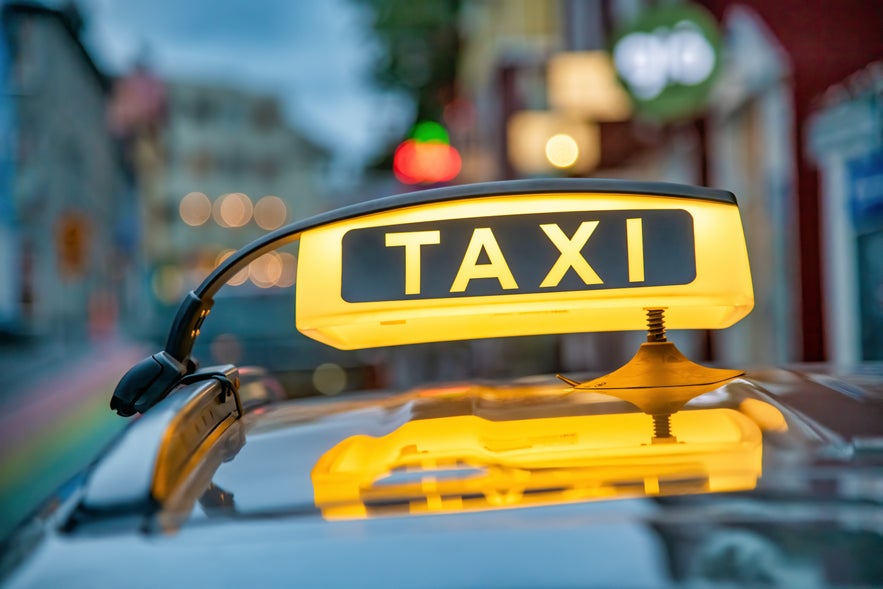 Taxi fares in Iceland are very expensive, especially for long trips. Unlike many other countries, Iceland doesn’t have Uber or Lyft, so travelers rely on taxis, public buses, or airport shuttles.
Taxi fares in Iceland are very expensive, especially for long trips. Unlike many other countries, Iceland doesn’t have Uber or Lyft, so travelers rely on taxis, public buses, or airport shuttles.
Taxis are easy to spot with their yellow roof signs and official meters. You’ll find them waiting outside bus stations, large hotels, and nightlife areas in Reykjavik.
However, the taxis waiting outside Keflavik International Airport are often considered one of the worst tourist traps in Iceland. The one-hour drive from the airport to Reykjavik can cost several times more than a shared airport transfer or shuttle bus.
To save money, book airport transfers in advance, like an airport bus ticket. These services are comfortable, reliable, and take you directly to central Reykjavik or your hotel.
Once in Reykjavik, getting around is easy. You can walk, rent an electric scooter, or use the Straeto bus system to explore the city. Taxis are best reserved for late-night trips or when traveling in groups.
4. Overpriced Convenience Stores
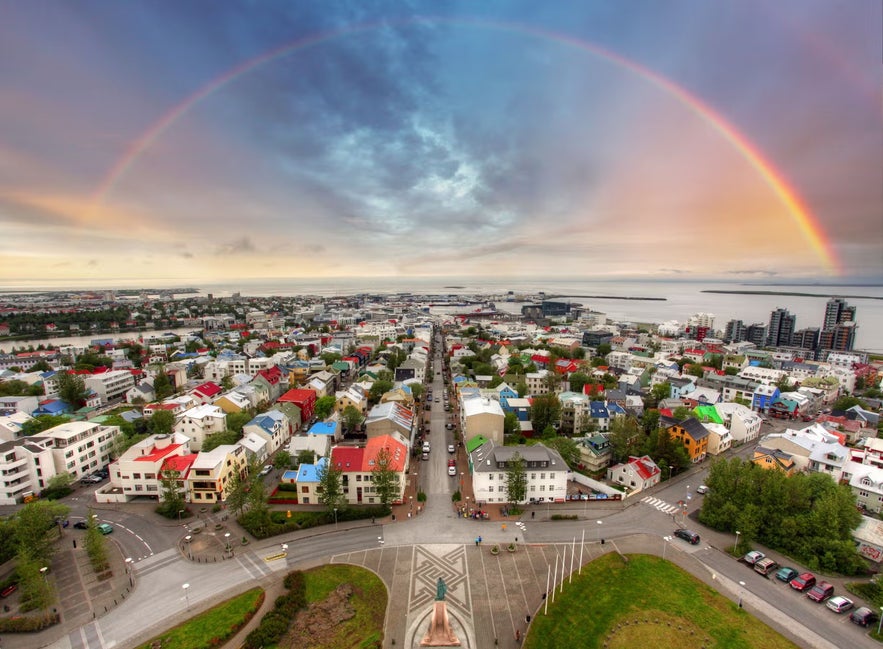 Convenience stores are easy to find in Iceland, especially in Reykjavik, but prices can vary a lot. Some shops stay open late or are close to popular attractions, which makes them convenient but also much more expensive.
Convenience stores are easy to find in Iceland, especially in Reykjavik, but prices can vary a lot. Some shops stay open late or are close to popular attractions, which makes them convenient but also much more expensive.
Certain small stores in downtown Reykjavik charge very high prices for snacks, drinks, and basic travel items that cost much less elsewhere. Many visitors stop by without realizing they’re paying double or even triple the normal price.
Gas station stores across the country can also be costly. It’s better to shop at affordable grocery chains like Kronan, Bonus, or Netto before heading out on a road trip.
Shopping smartly can save you a lot of money during your trip. Avoid impulse buys in tourist-heavy areas, and stock up at local supermarkets instead. Overpriced stores like these are often considered some of the worst tourist traps in Iceland.
- Read more: Shopping for groceries in Iceland
3. Not Taking Advantage of Happy Hour
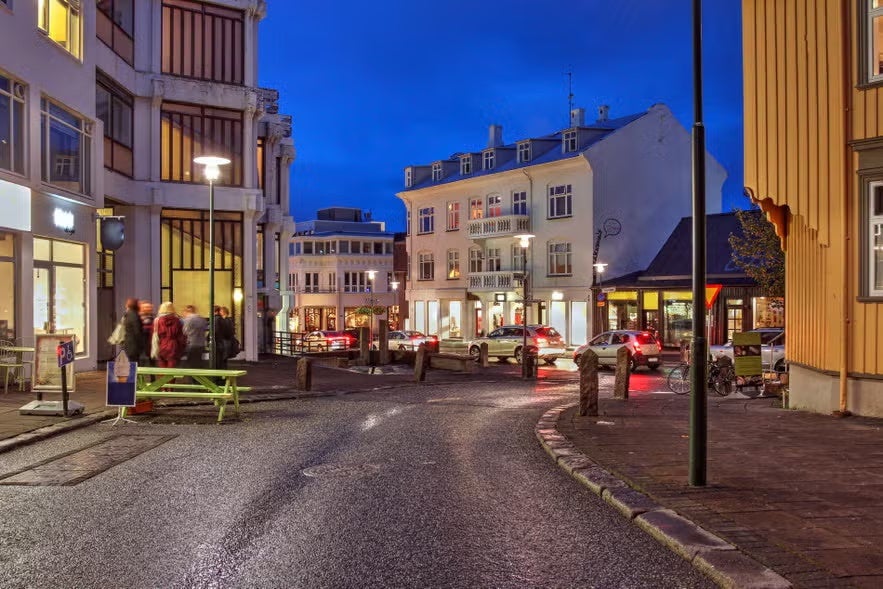 If the drink prices in Iceland’s bars surprise you, you’re not alone. Iceland is known for having some of the highest alcohol prices in the world, which can make a night out in Reykjavik expensive for travelers.
If the drink prices in Iceland’s bars surprise you, you’re not alone. Iceland is known for having some of the highest alcohol prices in the world, which can make a night out in Reykjavik expensive for travelers.
Locals have found clever ways to manage these costs, as they usually enjoy a few drinks at home before heading downtown, a habit known as “pregaming.” Picking up drinks at the airport duty-free and starting your night out at your accommodation can help you save a lot of money during your stay.
If you’d rather enjoy the lively atmosphere of Reykjavik’s bars, look for the best happy hour offers. Many bars and pubs offer discounts of up to 50% on beer, wine, and cocktails during certain hours in the late afternoon and evening.
For more nightlife tips, read the ultimate guide to nightlife in Reykjavik and discover how to enjoy Iceland’s bar scene without breaking the bank. Skal!
2. Near Beer
 When it comes to beer in Iceland, visitors are often surprised by the country’s alcohol laws. Alcoholic drinks are only sold in state-run stores called Vinbudin (The Wine Store) and not in regular supermarkets or gas stations.
When it comes to beer in Iceland, visitors are often surprised by the country’s alcohol laws. Alcoholic drinks are only sold in state-run stores called Vinbudin (The Wine Store) and not in regular supermarkets or gas stations.
You might see “beer” on supermarket shelves and think you’ve found a bargain, but it’s actually near beer, a light version with only 0 to 2.25% alcohol. Many first-time travelers fill their carts without realizing it’s not real beer!
This isn’t exactly one of the worst tourist traps in Iceland, but it’s a common mistake that catches visitors off guard. If you want regular beer, wine, or spirits, visit a Vinbudin store, where you’ll find the real thing.
On the bright side, near beer won’t give you a hangover, so you’ll be up early and ready for the next adventure. For a proper drink, check out the city’s lively bar scene and discover the best bars for craft beer in Reykjavik.
1. Puffin Shops
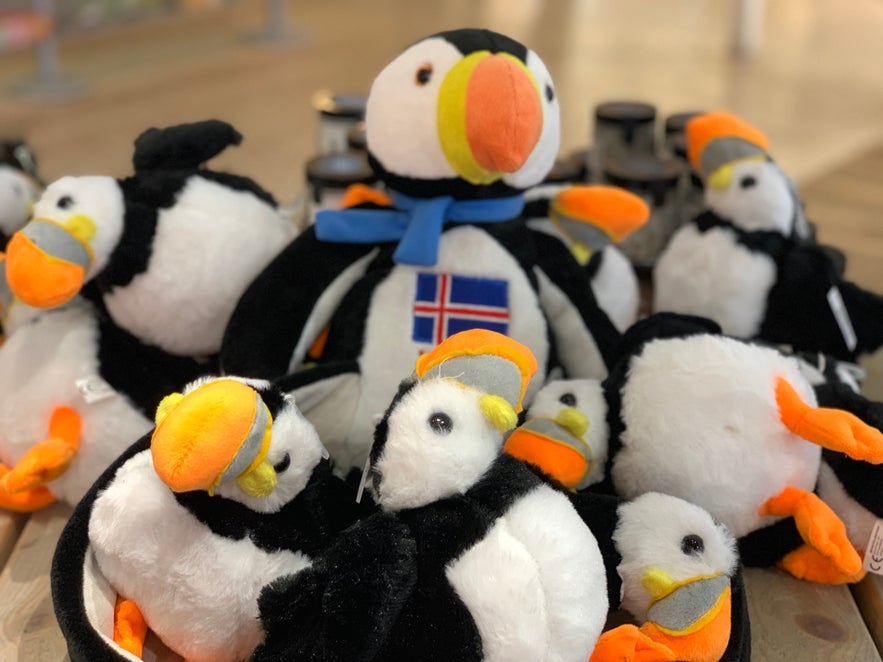
The so-called “puffin shops” top the list of the worst tourist traps in Iceland. Found throughout downtown Reykjavik and near major attractions, these stores claim to sell authentic Icelandic souvenirs, but most items are mass-produced overseas and not truly Icelandic.
If you just want a small souvenir, like a puffin keychain or a plastic Viking helmet, these shops can be fun to visit. Just remember that the prices are often high, and the items aren’t always worth the cost.
For travelers looking for real Icelandic crafts, it’s best to shop at trusted local places. Visit the Handknitting Association of Iceland for beautiful handmade sweaters and the National Museum of Iceland gift shop for authentic souvenirs. You can also explore the Kolaportid Flea Market by Reykjavik Harbor on weekends to find unique local treasures.
Instead of buying puffin souvenirs, why not see the real birds up close? Iceland is one of the best places in the world to spot puffins in their natural habitat.
Here are a few top-rated puffin tours that let you encounter these charming seabirds in the wild:
-
Whale & Puffin Watching Boat Tour from Reykjavik - Have a chance to see puffins, whales, and other wildlife while on the gorgeous Faxafloi Bay.
-
Family-Friendly Puffin Boat Tour from Reykjavik - Enjoy a fun and educational boat trip perfect for all ages, where you'll sail close to puffin nesting grounds and learn about these charming seabirds from expert guides.
-
Thrilling 9-Hour Vestmannaeyjar and Puffins Guided Tour from Reykjavik - On this exciting guided tour, you'll visit the Westman Islands and see both puffins and beautiful islands.
Frequently Asked Questions About the Worst Tourist Traps in Iceland
 Travelers often wonder what to avoid and how to make the most of their Iceland trip. These FAQs explain the worst tourist traps in Iceland and share simple tips to help you save money and enjoy authentic experiences.
Travelers often wonder what to avoid and how to make the most of their Iceland trip. These FAQs explain the worst tourist traps in Iceland and share simple tips to help you save money and enjoy authentic experiences.
What are the worst tourist traps in Iceland?
The worst tourist traps in Iceland are places or services that charge too much, promise more than they deliver, or are not what they appear to be. These include things like overpriced souvenirs, expensive airport taxis, and tours that don’t meet expectations.
How can I avoid one of the worst tourist traps in Iceland when it comes to souvenirs?
To avoid souvenir traps, look for shops offering authentic local products at fair prices. One of the traps is souvenir shops that sell mass-produced items with high tourist mark-ups. Check authenticity, for example, look for “Made in Iceland” on wool sweaters.
Can transportation be one of the worst tourist traps in Iceland?
It can be. For example, taking a taxi from the airport instead of a shuttle bus may cost several times more. This is listed among the worst tourist traps in Iceland. Research transport options ahead to avoid paying too much.
How do I protect myself from the worst tourist traps in Iceland when planning tours?
To protect yourself, choose tours carefully. Read recent reviews, compare costs, ask what you are really getting, and focus on experiences that match what you want. Some high-priced tours promise “once in a lifetime” sights that may not deliver.
Is it safe to drink tap water in Iceland instead of buying bottled water?
Yes, tap water in Iceland is very clean and safe to drink. Buying bottled water is often unnecessary and expensive. Refilling a reusable bottle at a tap is a smarter choice.
Avoid These Tourist Traps in Iceland and Make Your Visit One to Remember!
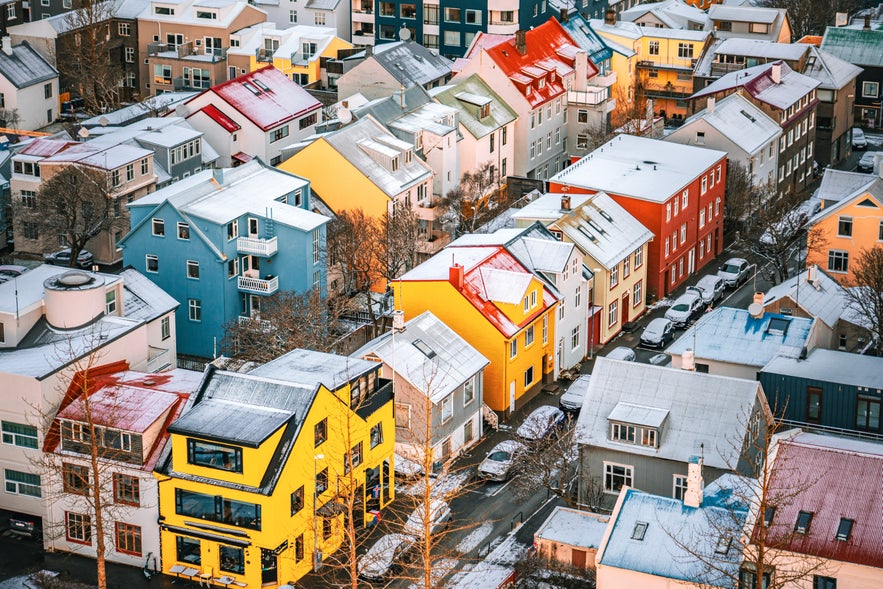 Avoiding common tourist traps helps make your Iceland trip easier, cheaper, and far more enjoyable. With a bit of preparation, you can skip unnecessary expenses and focus on what truly matters. Take time to explore Iceland’s waterfalls, volcanoes, glaciers, and geothermal baths at your own pace.
Avoiding common tourist traps helps make your Iceland trip easier, cheaper, and far more enjoyable. With a bit of preparation, you can skip unnecessary expenses and focus on what truly matters. Take time to explore Iceland’s waterfalls, volcanoes, glaciers, and geothermal baths at your own pace.
Planning ahead also means supporting local shops, restaurants, and experiences that offer genuine Icelandic culture. Choosing wisely lets you connect more deeply with the people and places that make this island so unique.
With this guide to the worst tourist traps in Iceland, you’ll be better equipped to travel smart and confidently. Every moment you spend here can be filled with real adventure, unforgettable views, and authentic memories that last a lifetime.
Have you come across any tourist traps during your time in Iceland? Share your experiences or tips in the comments to help other travelers make the most of their visit.



